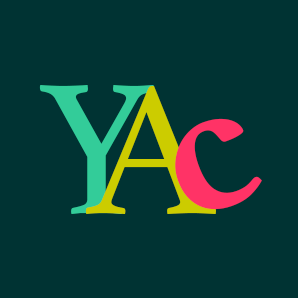Paul Ygartua's first mural, painted in 1983, Chemainus, BC
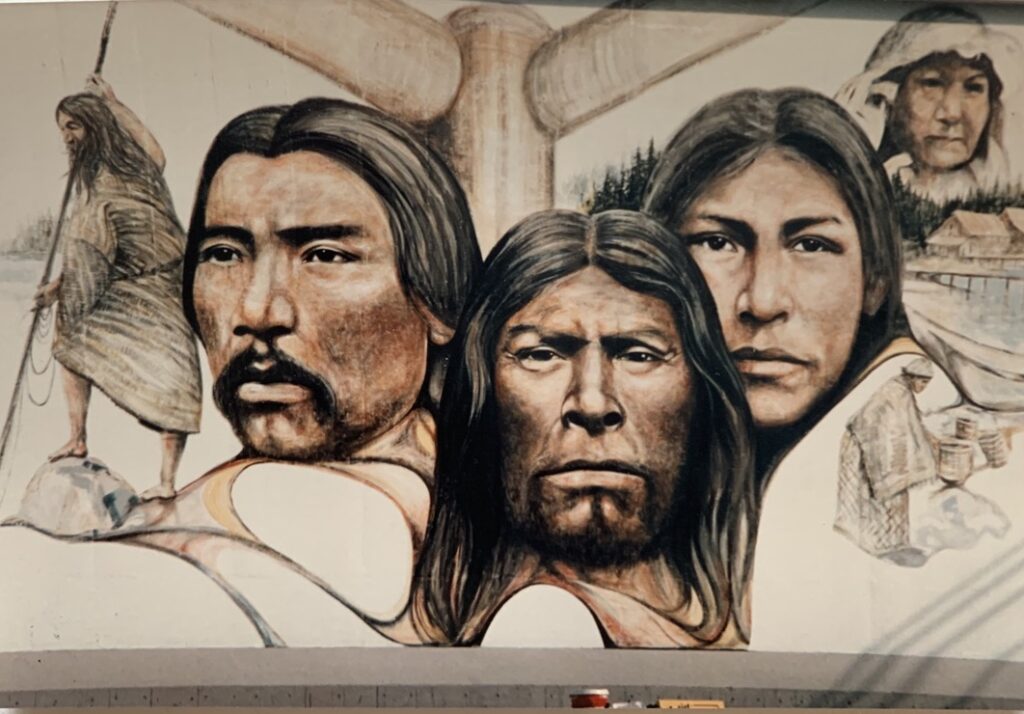
In 1982, Paul and Joanne were doing a show at the Nat Bailey Stadium in Vancouver. Paul had his Native Faces there and a TV crew came up and asked to do an interview with him. Karl Schutz, the creator of the Chemainus Murals saw this TV interview that same day. The next morning he called them up from Chemainus and told them about his mural project. He said he had an interesting offer for Paul involving his native work. The town of Chemainus, originally one of the largest sawmills in the world, MacMillan and Bloedell, had closed down, and he believed they needed to come up with an idea to save the town of Chemainus. The Murals would highlight the history of the town from its early beginning water wheel driven mill to one of the largest sawmills in the world. He believed the story of Chemainus told through the murals would attract tourists worldwide. He searched for the best mural artists, painters that he could find and many of the artists are world-renown. When Karl Schutz saw the TV interview and the big native face, he knew Paul was the artist to do this mural that would be dedicated to the local Natives and the First People of Canada. He would build the wall in the center of town. It would be a monumental centrepiece, in homage to our Native people, with a park in front and it would be the first mural you see when you enter the town of Chemainus.
This was a global art project and it was important to build an international reputation where tourists world-wide would actually make a special trip to see these remarkable murals located in the Cowichan Valley of Vancouver Island, BC. Karl Schutz succeeded and Chemainus earned the reputation of “THE LITTLE TOWN THAT DID”. In 1983, it won the prestigious New York Downtown Revitalization Award for the redevelopment of its core. It has since gained world-wide acclaim for the integrity and superb artistry of its huge depictions of the community’s history.
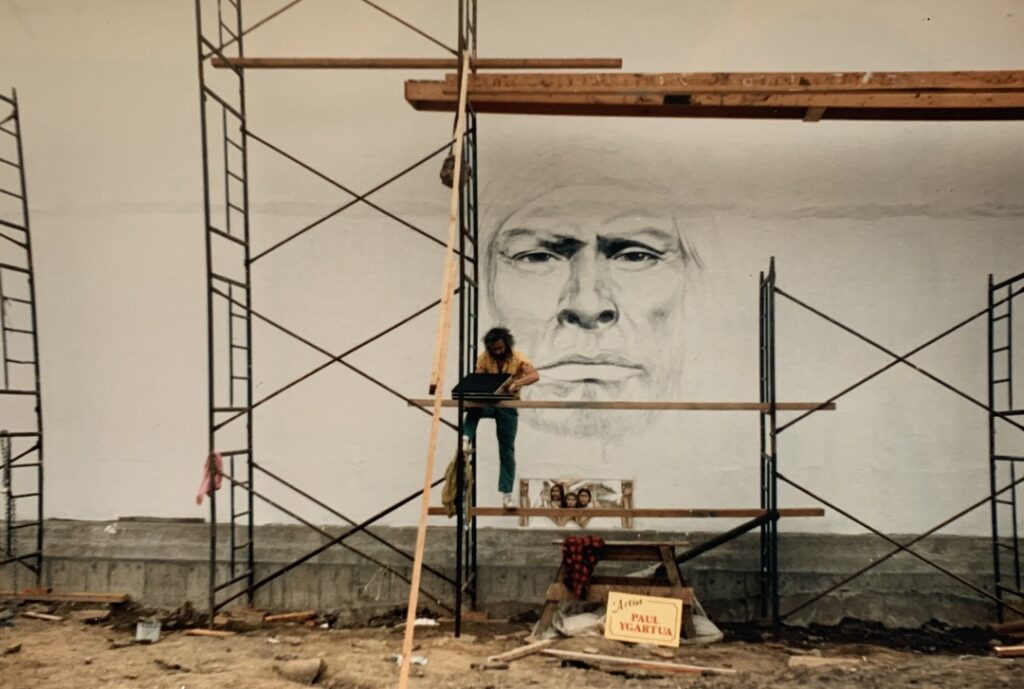
Karl’s idea for Paul would be the creation of the Native Heritage. A mural that would depict the first native policeman of Chemainus, Chief Chemainus, a Salish Woman and Mrs. Rice, in the upper right hand corner.
So, with no experience Paul looked at the project, and said to Karl: “OK, get the material to me and I will do you a small sketch just to give you an idea where I am going to place the three natives faces, the poles and Mrs. Rice.”
The following week, a courier came with photos from the archives of the City of Chemainus. The subject matter was in black and white. The faces represented strength of character and a sense of spellbinding dominance. The wall would be 15.4 metres long by 5.2 metres high.
Paul was fearless when he approached that wall in April 1983. They were due to arrive at the mural wall at 8am and they arrived on the dot as Paul is always very punctual. The first thing Karl Schutz asked for was Paul’s GRID (which is what muralists use to scale their artwork). This is squared off, so the artist will have a guide for the layout of the mural. So when Paul said he didn’t work that way,(and remember he had never done a mural before, this was his first one) it was quite appropriate for Karl to get upset and not understand what was going on. Most artists would spend days preparing and working on their scale to make sure everything was perfect. Karl said: “Paul,this is very important, your mural, it has to be right” and as there was no more to be said he nervously left him to it.
Joanne remembers this massive wall and all the scaffolding in front. “I didn’t want to say anything, I always knew he could do anything he set his mind to, but all I was thinking was: he had only done a five minute sketch! Even the night before we left for the Island I asked him if he would like to discuss how he was going to approach the wall… not to mention, how do you do it with no experience and absolutely no planning? Well, I do like to always be positive, and left it at that. Of course, I never wanted him to think that I would ever doubt his ability.
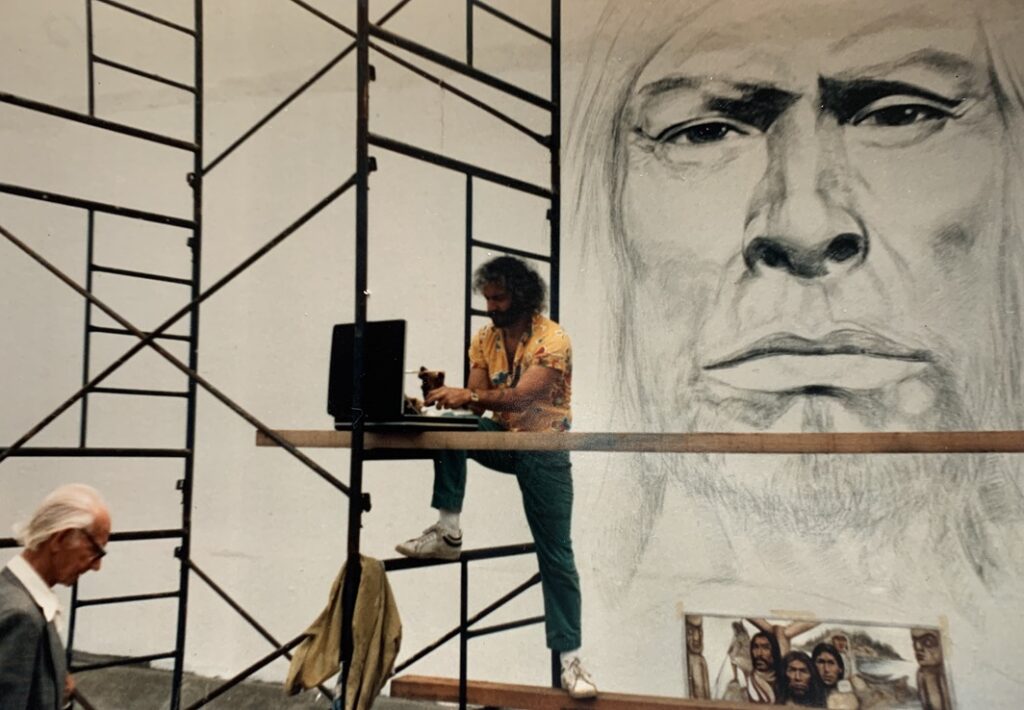
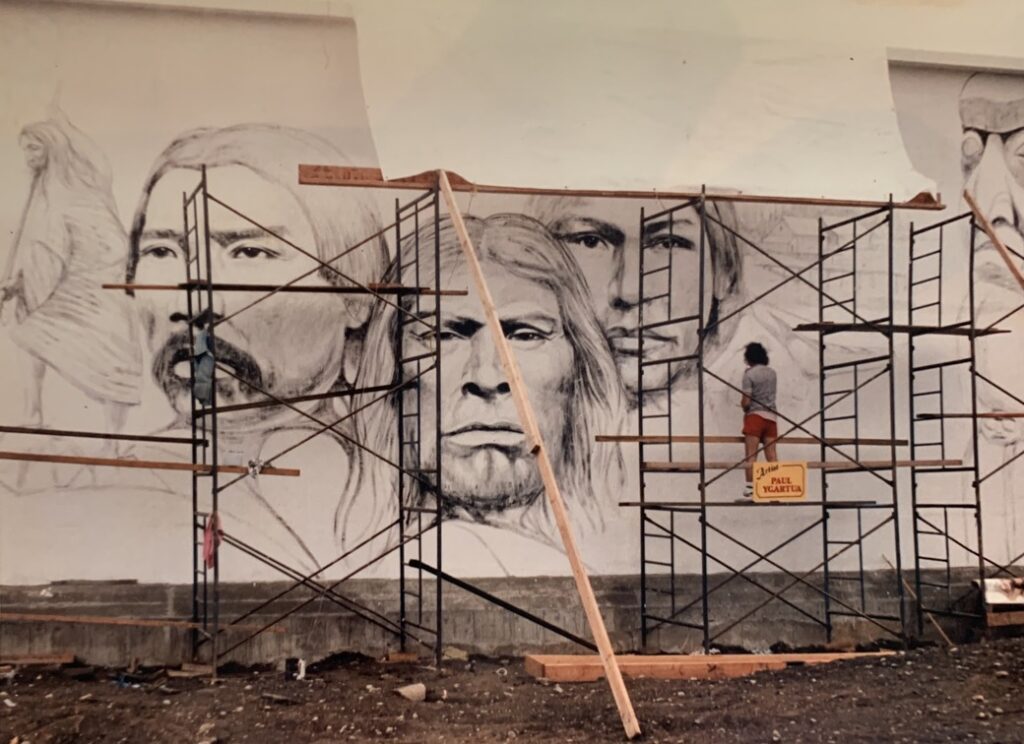
Paul just eyed the wall up and down, crossed the street, drew one eye in the center of this enormous wall, Chief Chemainus, then he crossed back over to the other side of the street, and said to her: “That’s it”
7 days later, he finished the Native Heritage, his first mural, freehand with no scale, no planning and no experience!
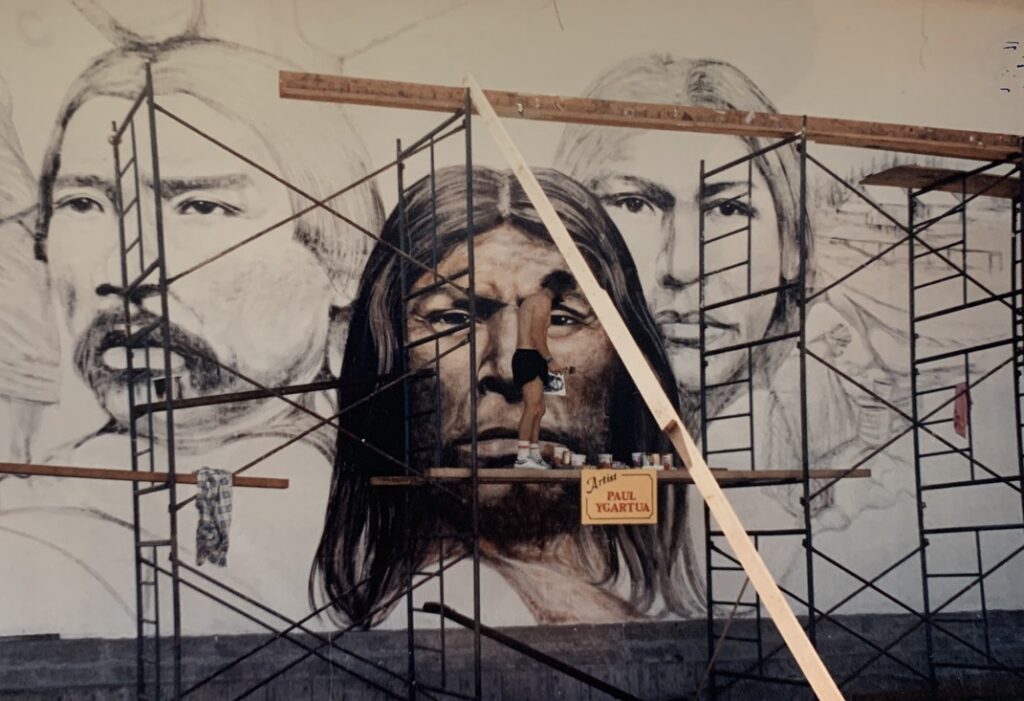
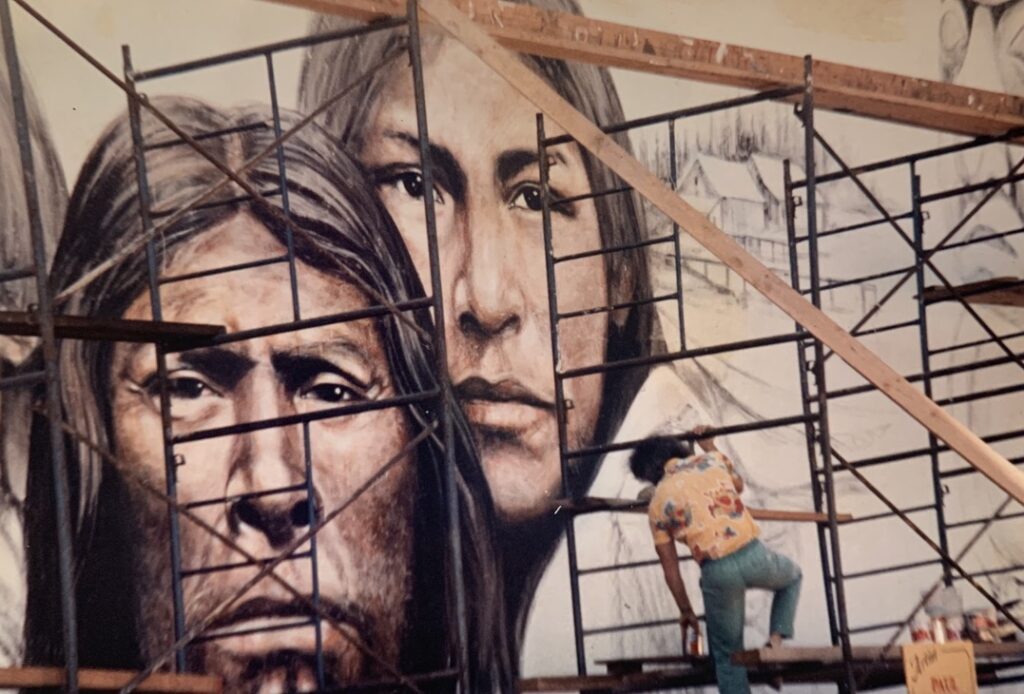
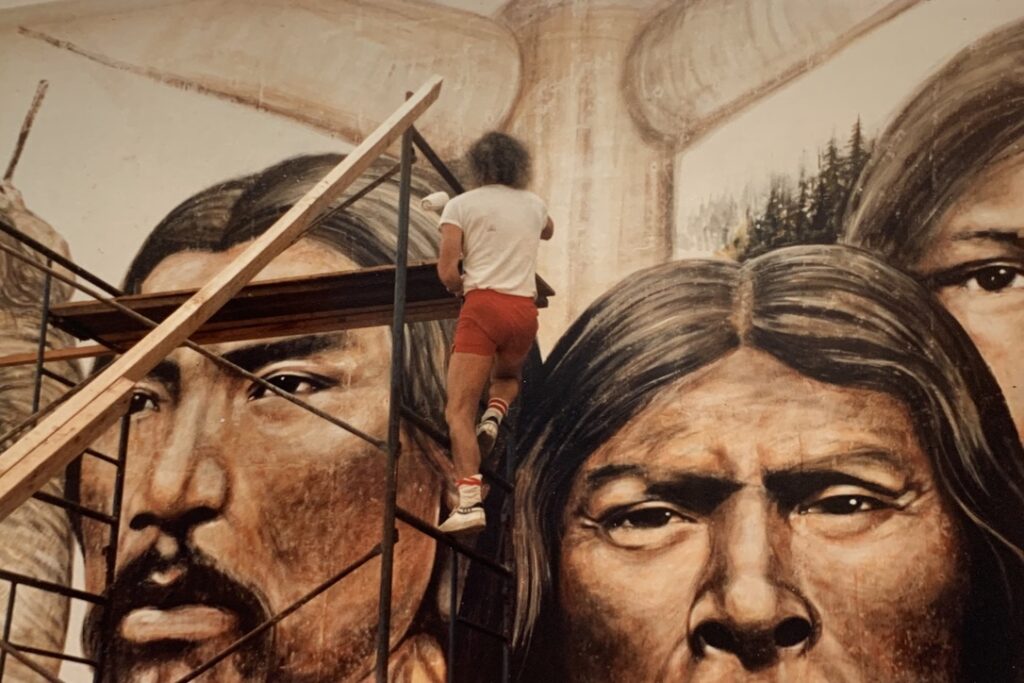
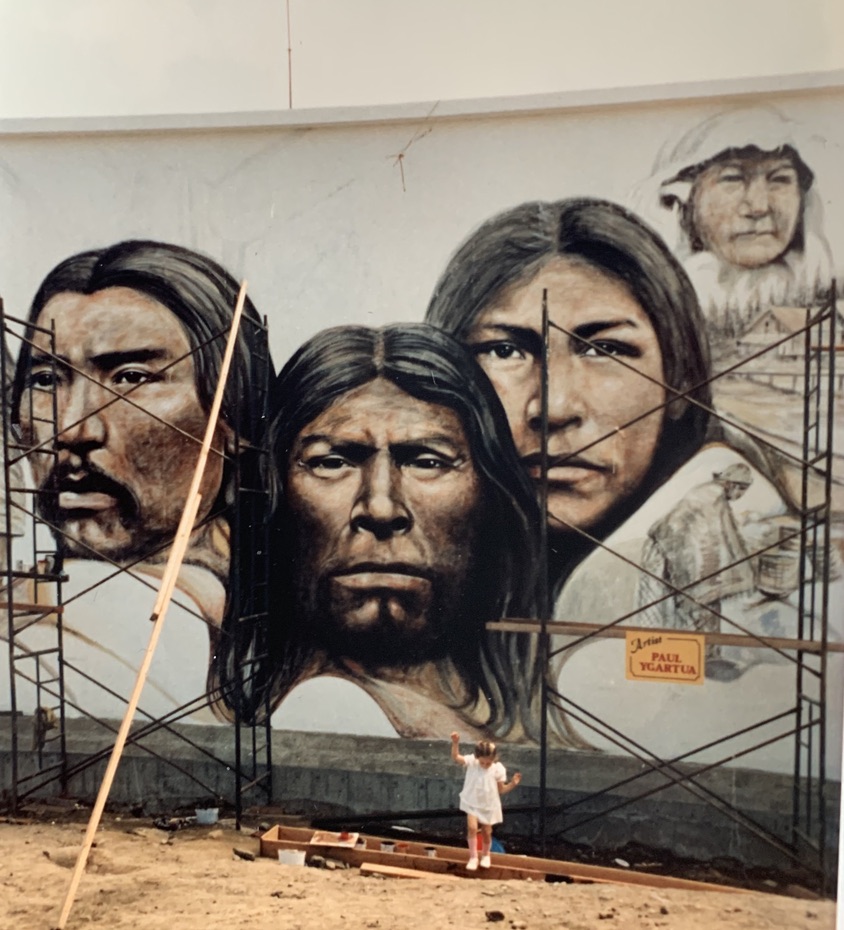
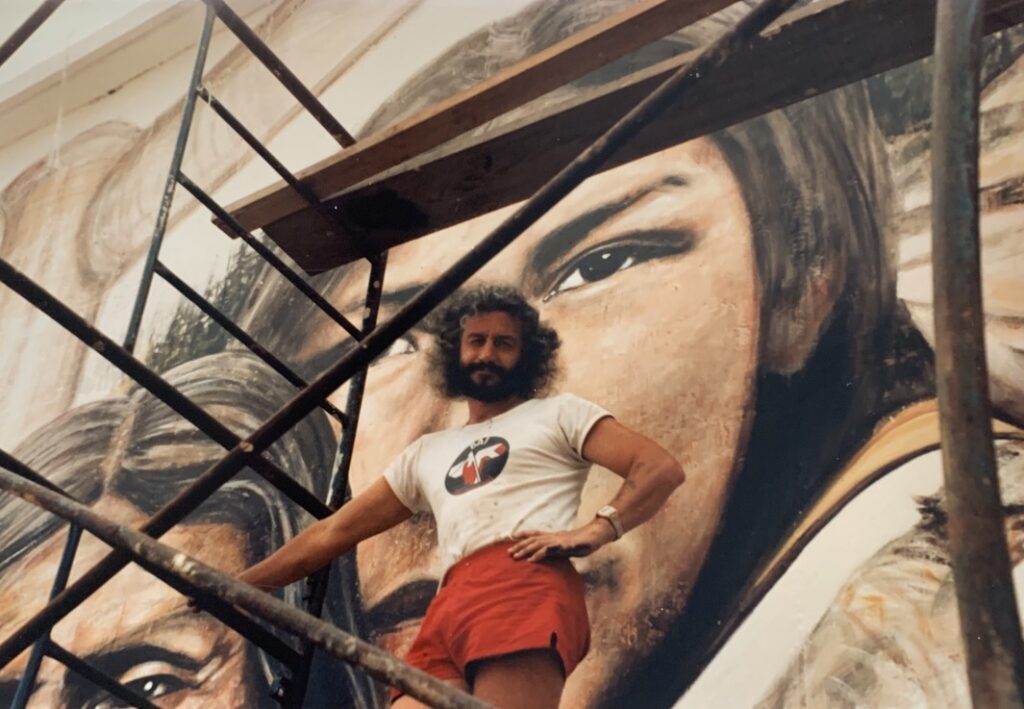
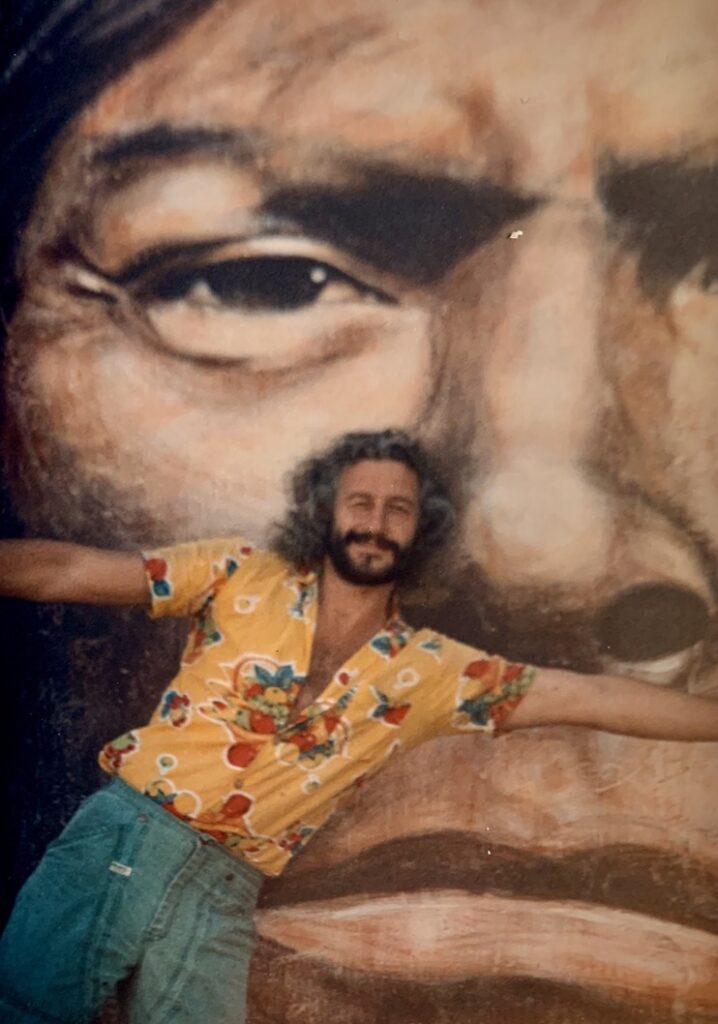
NATIVE HERITAGE
(excerpt from the book: The Chemainus Murals) 15.4M X 5.2M (50’ X 20’)
Mill Street and Chemainus Road
Artist: Paul Ygartua
Painted in 1983. Restored in 2002.
Restored and enhanced in 2014.
This immense mural is based on figures from the Native past and present in this area. Carved poles flank the central images of (left) Ce-who-latza, who was Chief of the Lyackson Village on Shingle Point, Valdes Island, as well as a constable of the Native Police and a Native pilot for the Royal Navy; (centre) former Chemainus Band Chief Clay-sa-luke; and (right), a Salish woman. One of the other figures is Mary Rice, top right.
A dozen bands of Cowichan people, part of the Coast Salish language group, occupied the Cowichan and Chemainus Valleys for many hundreds of years before Europeans came to settle the area. Here they developed the rich heritage and superb artistic traditions which they maintain today. Many descendants of these first people continue to live in and around Chemainus.
With a wonderfully rich culture, these three local groups are very important to the Cowichan Valley. First nations groups have always been a big part in the development culture of Chemainus. The town name is even conceived directly from lore and legend of a First Nations tribe. With great honour we share the land and water with such beautifully diverse cultures.
Mural number 12 offers a glimpse of the native heritage of the area. The Cowichan Valley has long had a presence of First Nations people, with archaeological evidence dating back 4,500 years. This is reflected in the name of the town which means ‘broken chest’ due to the legend that a shaman and prophet survived a massive chest wound and went on to become a powerful chief. His people took his name which was “Tsa-meen-is”.
It is not only the name of the town that reflects this First Nations heritage. Mural number 12 exhibits three important figures including Ce-who-latza who was a village chief, a constable of the native police and a native pilot for the Royal Navy.
The following are the three first nations tribes in the Chemainus area:
Stz’uminus First Nation
Penelakut Tribe
Halalt
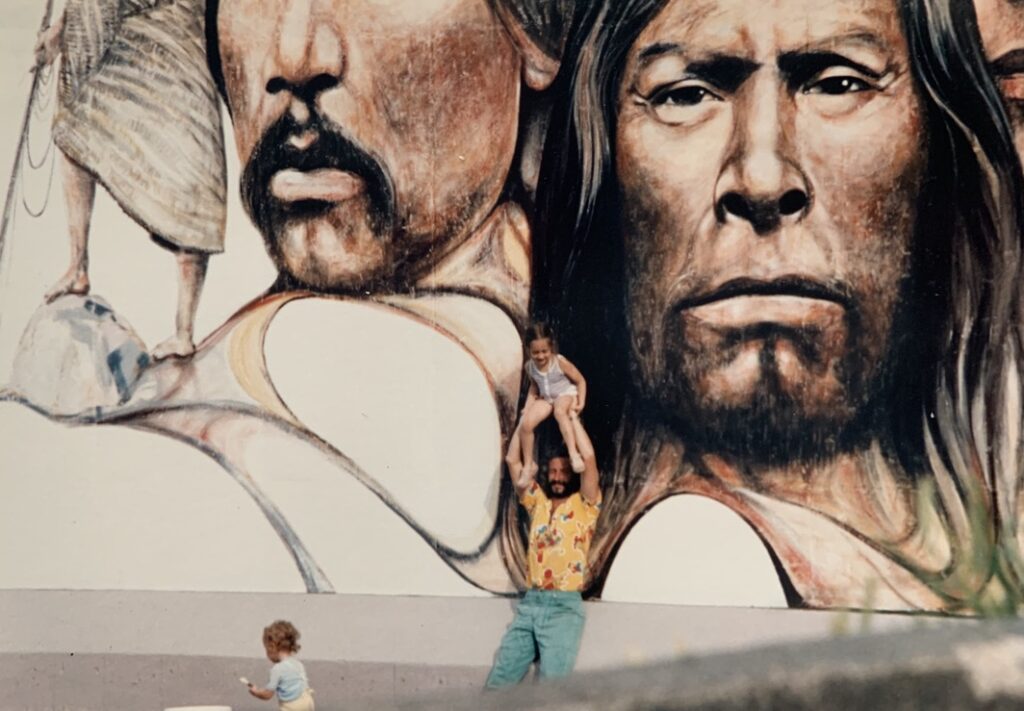
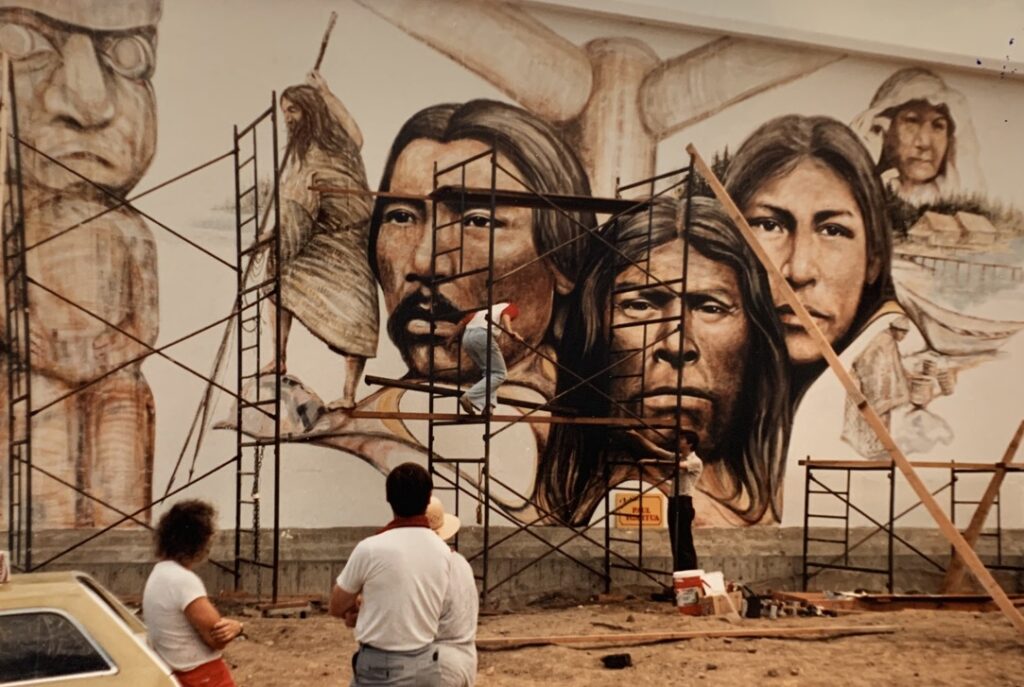
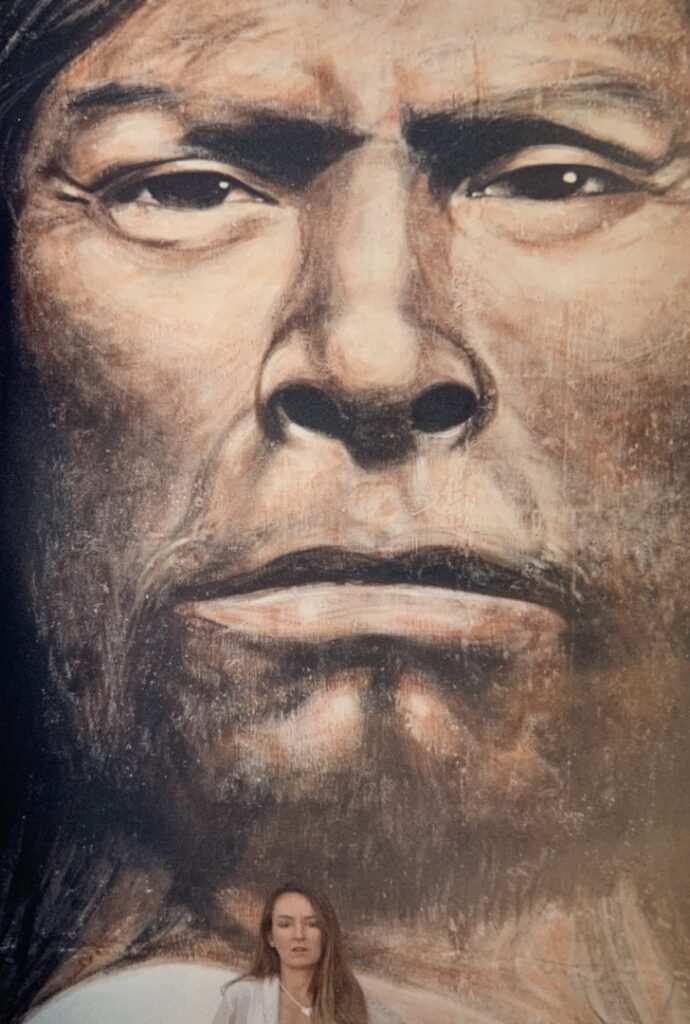
In 2002, Paul restored the Native Heritage mural. During the restoration, The Chemainus Mural Society organized a Special Event in Honour of the Native Heritage Mural with TV coverage and a Native Blessing. The Native Heritage Mural was given a blessing ceremony to celebrate the History and Culture of our First People of Canada. It is a First Nations tradition to bless a mural that depicts their heritage and this ceremony was very meaningful to Paul and Joanne.
The drummers and singers were wearing the Native Regalia. It was all very impressive. They had prepared a Feast for All and there were Natives that came in from other Provinces. It was a grand celebration. They were presented with blankets. In First Nations cultures, blanket gifting acknowledges relationship, honour, respect and recognition of an individual’s achievements. “We were so honoured and forever grateful for this meaningful and fulfilling experience”, says Joanne.
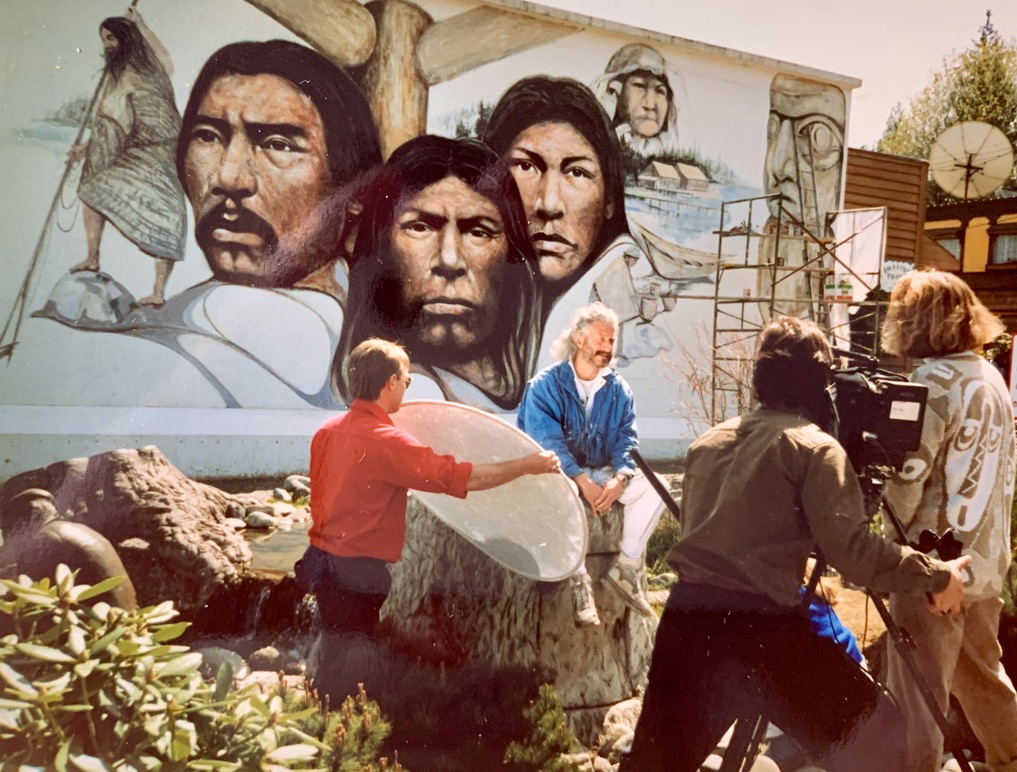
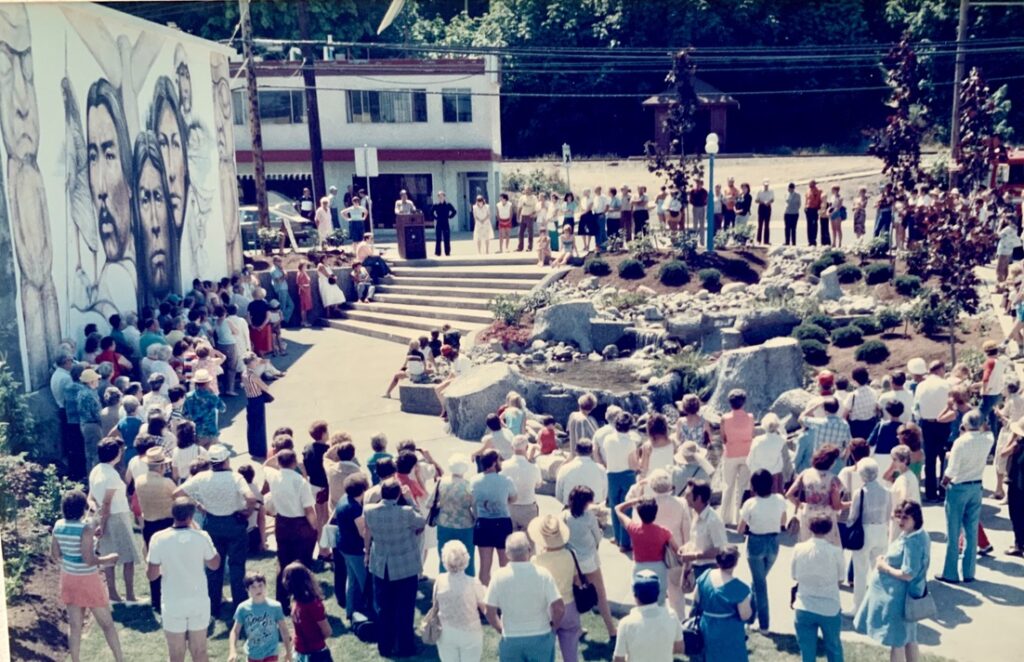
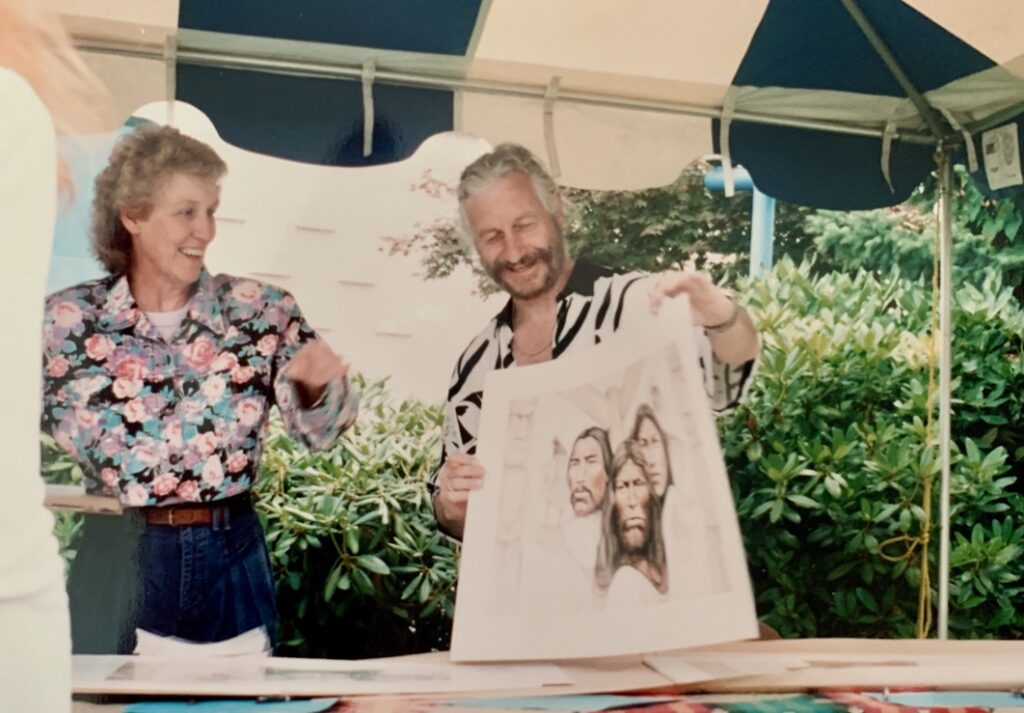
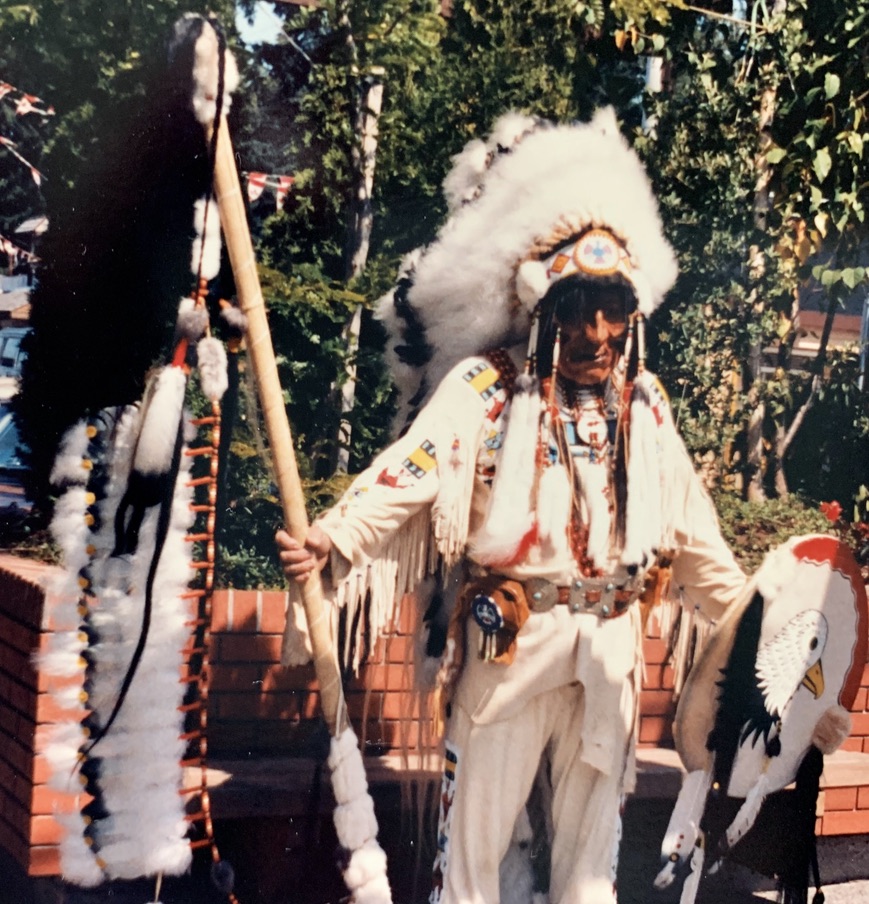
THE CHEMAINUS FESTIVAL OF MURALS SOCIETY asked Paul to do a replica of the mural, an acrylic on canvas painting, that could be reproduced for a special Limited Edition of the mural Native Heritage. The signing of this Limited Edition was combined with the Blessing of the mural by the local natives of Chemainus.
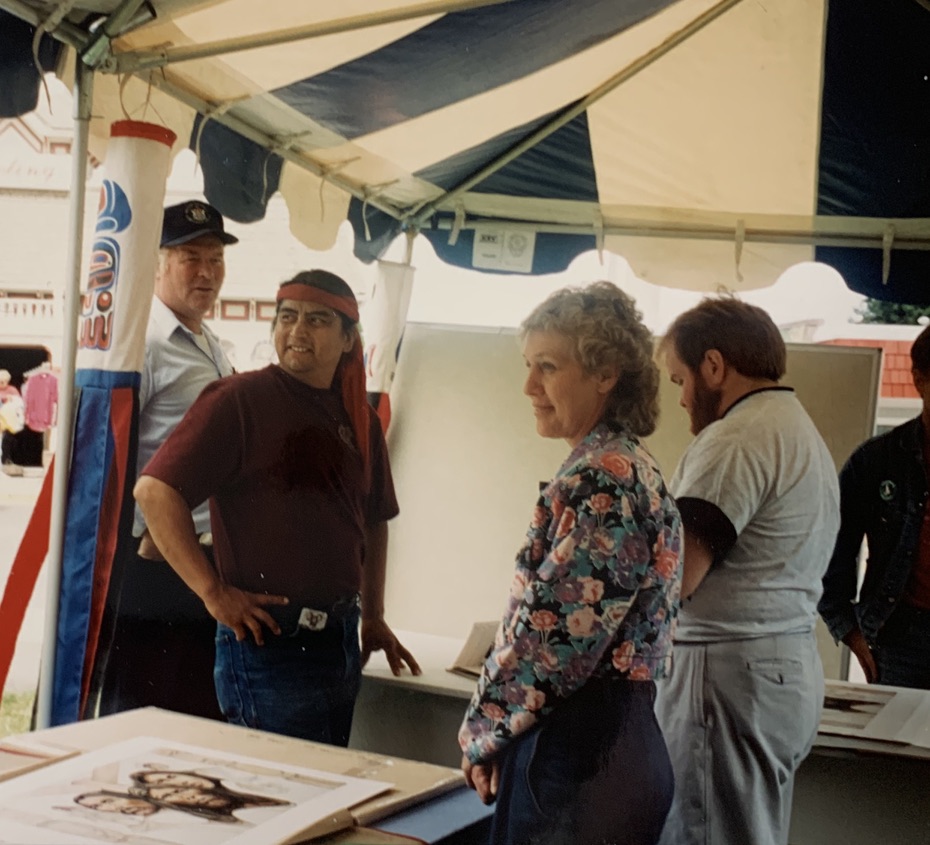
Herb Rice, Coast Salish Artist, Sculptor, Chemainus Selling Limited Edition.
Mrs. Rice is in the upper right hand corner of the mural. Her grandson, Herb Rice, is a Master Wood Carver of the Snuneymuxw (Nanaimo)Band who had his gallery in Chemainus his exquisite native carvings. He was instrumental in getting the blessing for this mural at a later date. Paul and Joanne saw him daily checking out the progress of the mural.
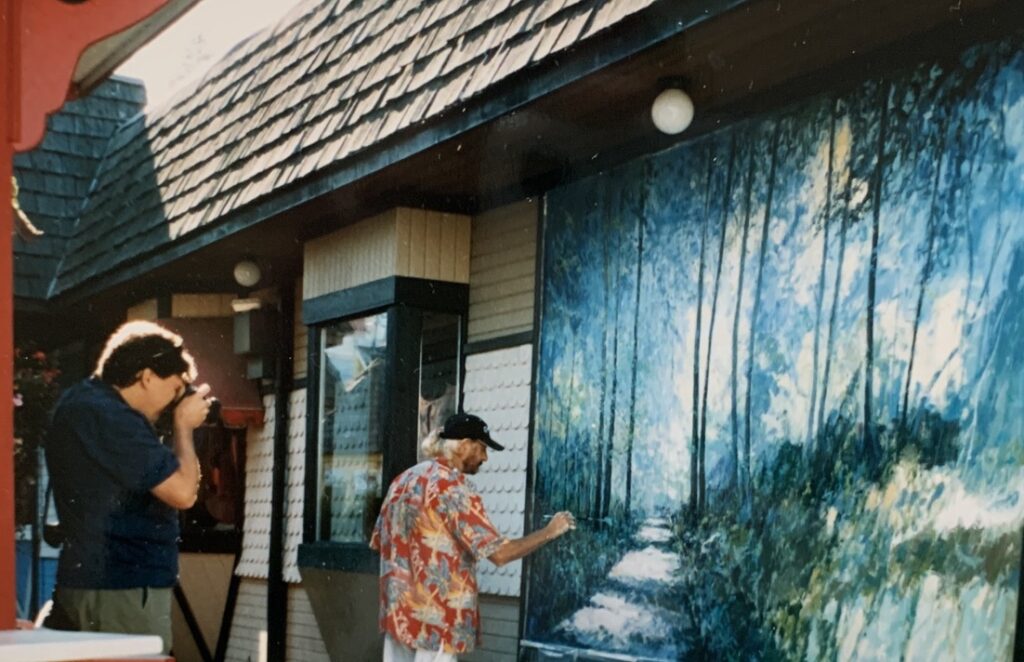
The Hermit, 2004, Mural #36 –3.3M x 2M (10’10”x6’5”)
Paul Ygartua was commissioned by the City of Chemainus to do a second mural, The Hermit, painted in 2004. He painted this one in one day (8 hours).
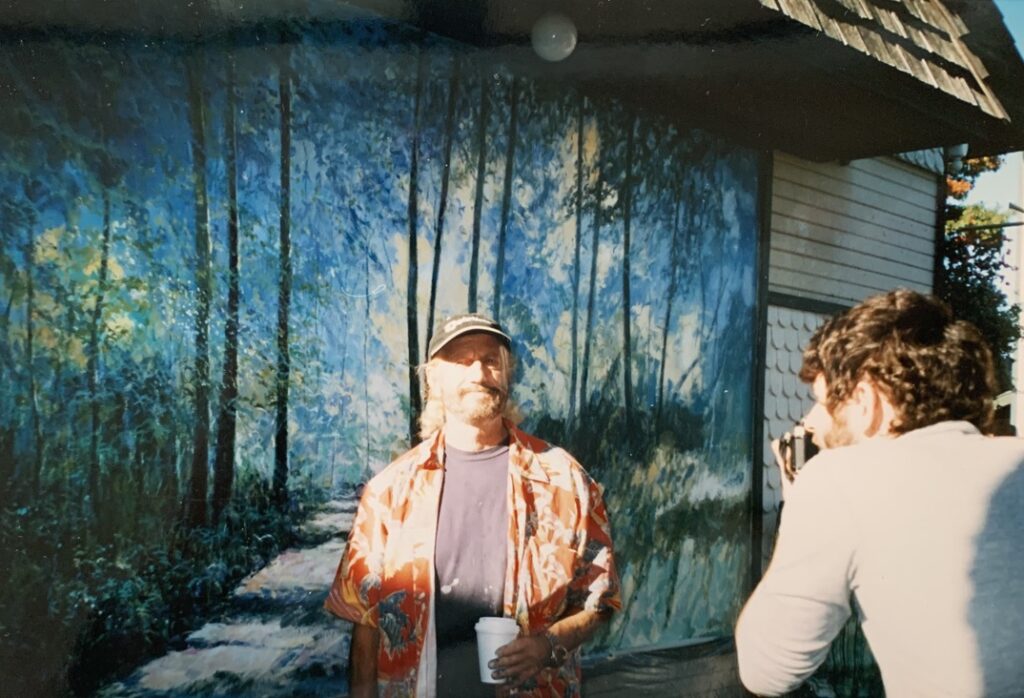
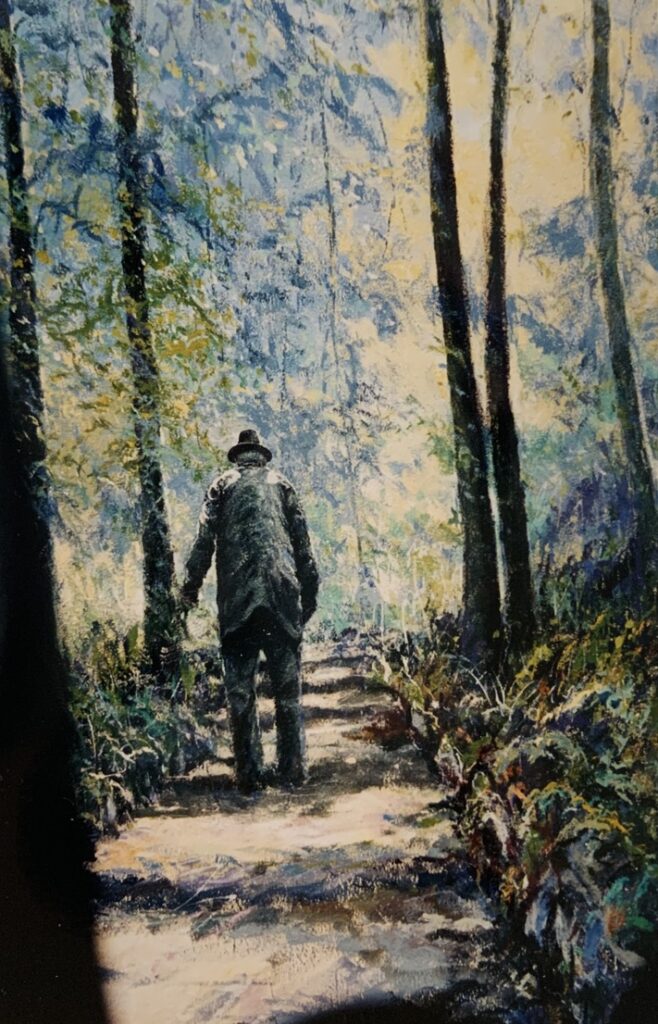
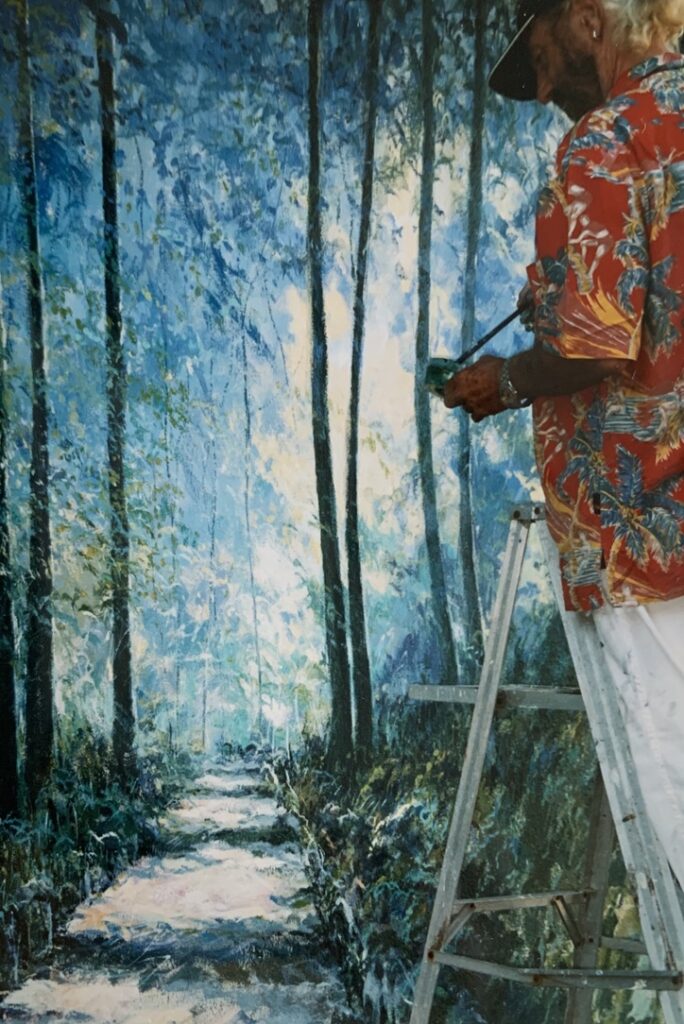
“The hermit was old and stooped and slow, but he worked diligently for many years, and moved hundreds of rocks and stone slabs to create a series of pathways and steps over a few acres of forest, bordered by gardens of wild flowers. Single-handed, with few resources, the hermit created a small forest paradise that’s been enjoyed by thousands of people.
The hermit’s name was Charlie Abbot. Charlie arrived quietly in Chemainus sometime in the 1970’s and lived alone in a makeshift shack in the forest where he created and maintained his environmental masterpiece until he died in 1989 at 87 years old. The Hermit Trails are Charlie’s legacy. Nature provided the raw materials, but Charlie’s labour translated nature’s beauty into eloquent human terms. Charlie was dedicated and determined and his work was deceptively simple. He used crude natural objects to create a mystical place that celebrates nature. Since Charlie’s death, local residents have maintained the Hermit Trails so Charlie’s creation continues to be enjoyed and appreciated.”
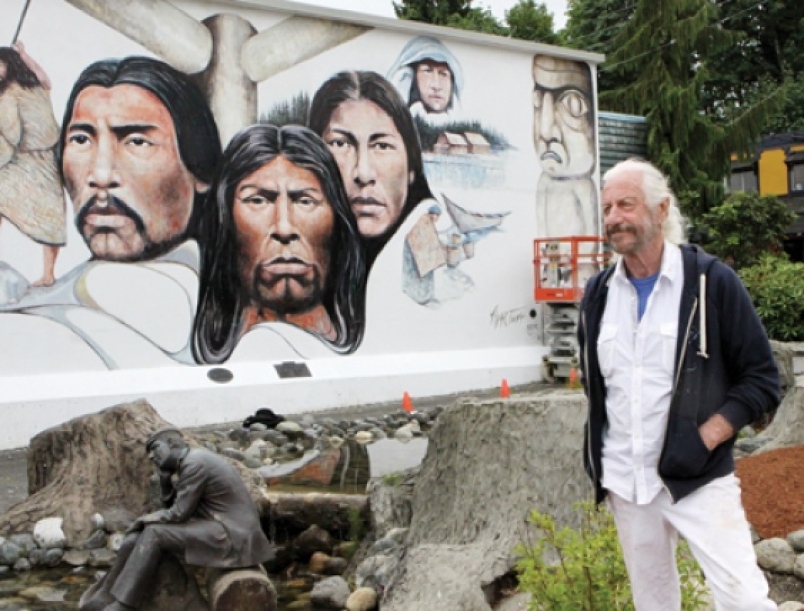
Original artist restores Chemainus’s most famous mural
INTERVIEW JUNE 30, 2014 Lexi Bainas / Cowichan Valley Citizen
Artist Paul Ygartua, who has been restoring his mural in Chemainus.
Photograph By COWICHAN VALLEY CITIZEN
Artist Paul Ygartua has been in Chemainus for the past week, restoring his famous mural, Native Heritage. The painting, with its arresting images of First Nations faces, is considered the mural to see first by many visitors.
Ygartua, who celebrated his 69th birthday with a paintbrush in his hand last Monday, is delighted to be back for the restoration job. It’s his third trip to Chemainus.
“It was a challenge to do it because I knew I wanted to do the faces really big. It was also the first time I’d ever painted a mural in my life. And that was in 1983. In those days I was fit enough to climb scaffolding,” he laughed. “Now we have a ladder lift, which is better and safer as well.”
Ygartua, who graduated from the Liverpool School of Art in England, said he enjoyed painting this subject matter.
“I thought it was important to have the right faces, it’s impressive. Then, I did another mural for Expo 86: the United Nations pavilion, and there I did the same thing. It was a painting of a large Haida chief in the middle.
“That was another thing that caused a lot of riot and controversy. I had people ask, ‘why do you want to put a native Indian in the middle?’ And I replied, ‘Well, can you think of anything that represents B.C. more than the natives?’ Then, they thought about it again,” he said.
Times have changed and Ygartua’s mural has become the iconic image of the entire Chemainus outdoor gallery. Few visitors leave the area without having experienced its magnetism.
“It was the entrance to Chemainus, too, and it was a stopper. You can see it from a hundred yards away driving down the road. The eyes are so penetrating,” he said.
“I practically had to paint it over,” Ygartua said of the restoration job.
“It was faded, it was white. I’ve had to put colour in all the faces, going into all the details again, repair some little damage in it. The totem poles? They’ve never looked this good,” he said.
I did the faces exactly like this but I didn’t do a lot of detail on those poles. Now I’ve repaired them with much more detail and I think they look much stronger than before.”
The sun sucks the colour out of the mural, he said. To rejuvenate it, he’s been helped by photographs taken when the work was newer.
As he looked around downtown Chemainus, Ygartua said he was still surprised at how it has changed since he first saw it in 1983.
“Even when I came they were starting to put in a lot of new buildings. They started with four or five murals. Now they’ve got 40 murals or more. Can you imagine that? It’s great. Because when people are heading towards Victoria or Nanaimo, it’s a long drive. They want to stop and have something to eat. It’s a perfect little place.
“They’ve done a lot here but they have to make an effort to keep it up because if you start letting the murals slide, that’s the worst thing.” Since he first painted his mural in Chemainus, Ygartua has gone on to create 15 more. His work now adorns walls in Canada, the United States and Europe.
